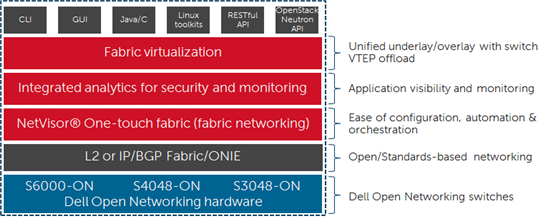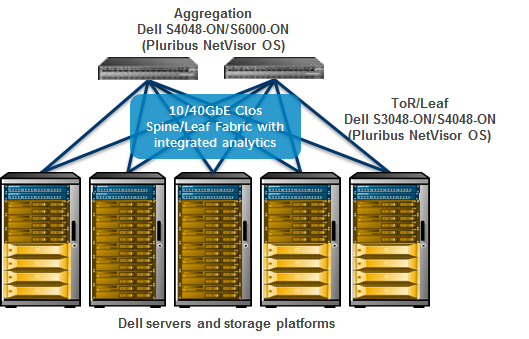Mid to large-size enterprise data centers continue to be impacted by major trends like demanding applications, virtualization and mobile users that have come to expect wire-speed network performance and anytime/anywhere connectivity. At the same time they are struggling with traditional proprietary network infrastructures that are expensive, hardware-bound, inflexible and hard to manage. In addition, the cost and complexity of using multiple management and monitoring tools for their data center network topologies continues to increase.
The data center network has become a mission-critical superhighway infrastructure that services and regulates this increasing level of traffic and connectivity. IT managers are looking for networking solutions that will provide the agility and application-awareness required to improve the economics, foster faster innovation and shift towards a fully software-defined data center.
Dell, working closely with Pluribus Networks, is helping enterprise organizations deploy an open, programmable network virtualization solution that will help them not only handle the requirements of today but also transition to SDN and private/hybrid cloud environments for the future. This joint solution will enable enterprise customers to combine the cost-effectiveness of Dell’s Open Networking brite-box platforms with Pluribus Networks NetVisor OS to build a high-availability fabric cluster with a single point of management and powerful analytics.
The Netvisor distributed fabric, built on top of an open, standards based L2/IP network, permits a Dell ON leaf-spine deployment to be managed, automated and programmed as a single node with associated operational advantages. Where it differs from older centralized approaches is that it is controller-free, distributing this capability across each node. The Netvisor fabric brings together effectively the ease of management of a centralized controller architecture, with the scalability and high availability properties of a fully distributed architecture with no single point of failure.
Additional key features and benefits include:
- A broadcast-free L2 fabric offering global provisioning and visibility of resources such as ports, VMs, and traffic flows across the fabric.
- Active-Active Multi-chassis link aggregation (LAG) and Active-Active virtual routing redundancy protocol (VRRP).
- Internal border gateway protocol (iBGP) or external border gateway protocol (eBGP) multi-pathing for highly scalable leaf/spine architectures.
- Standard management interfaces such as a command line interface (CLI), graphical user interface (GUI), and representational state transfer (REST) APIs speak to network operations skillsets, while Linux automation and management toolsets empower development operations.
- Compatibility with third-party networks based and virtual extensible local area network (VXLAN) overlay technologies
Building on the one-touch fabric, Pluribus Integrated Analytics uniquely offers tap-free in-line analytics without the need for a separate visibility fabric. With the proliferation of threats, CIOs realize that traditional perimeter security is only part of the solution. Real protection must be multi-layer, with visibility into both the underlay and the overlay. It also needs to be deployable with existing networking skillsets. Netvisor-based analytics offer this protection, securing the network interior in addition to firewalls at the DMZ or at the vSwitch.
Adding to Netvisor’s fabric and analytics capabilities, fabric virtualization unifies the overlay and underlay with scalable VXLAN orchestration and VXLAN tunnel endpoint (VTEP) switch offload, permitting enterprises to scale their SDN deployments. Per-VM flow analytics offers required visibility, and an open architecture eliminates any protocol or vendor lock-in.
The increasing demands on enterprise data center networks requires they rethink their legacy approach and consider an open and flexible network fabric backbone that can stay ahead of these requirements. A cost-effective, SDN infrastructure can help these organizations future-proof their networks and deliver superior services. Together Dell and Pluribus Networks are transforming the networking landscape with an innovative solution combining a unique one-touch fabric, analytics and market leading brite-box switching platforms, and helping our customers to do more. Be sure to let us know about your networking solution needs, and follow @DellNetworking on Twitter for more news and information.

